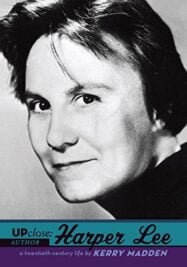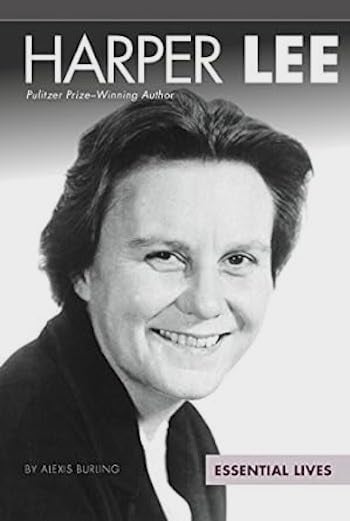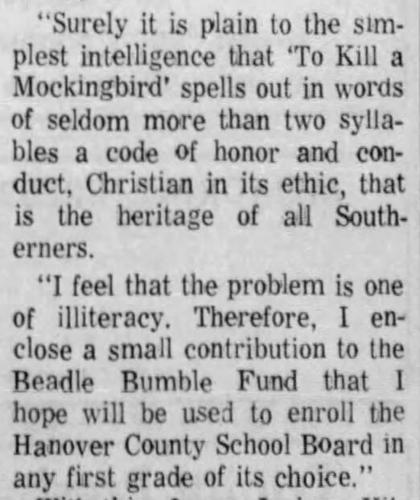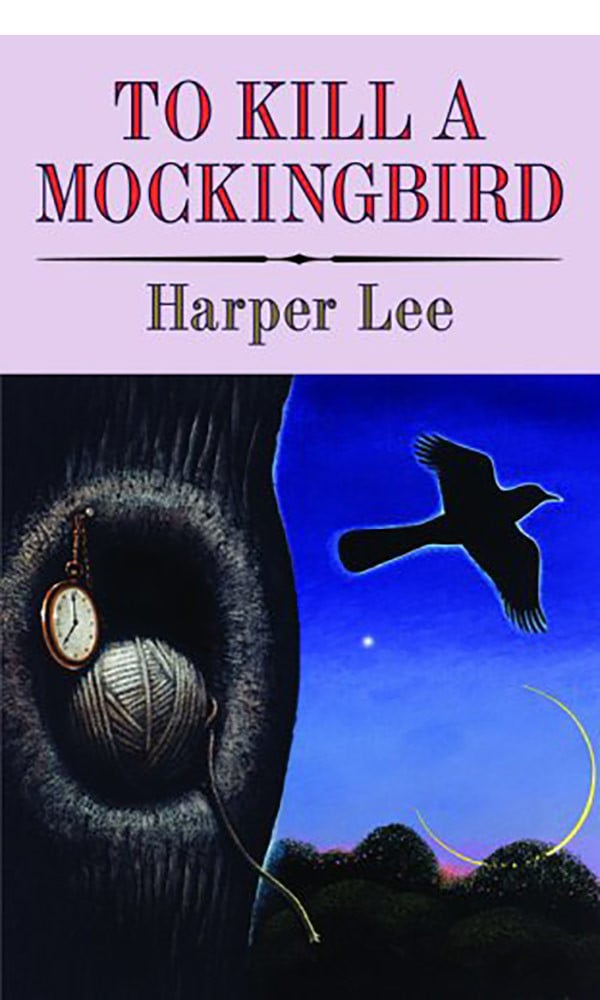10 Facts About Harper Lee, Author of To Kill a Mockingbird
By Hannah Wright | On January 29, 2024 | Comments (0)

Presented here are 10 facts about Harper Lee (1926 – 2015), Southern author known for the novel To Kill a Mockingbird (1960). Considered one of the Great American Novels, To Kill a Mockingbird is the story of a small southern town embroiled in a racially charged trial, told from the perspective of a precocious young girl, Scout.
The novel drew inspiration from Lee’s upbringing in Monroeville, Alabama. The novel has sold tens of millions of copies and is still widely taught in American classrooms for its moral teachings.
“You never really understand a person until you consider things from his point of view… Until you climb inside of his skin and walk around in it.” (Harper Lee, To Kill a Mockingbird)
. . . . . . . . .

Learn more about Harper Lee
. . . . . . . . .
Truman Capote and Harper Lee were childhood friends
Author of Breakfast at Tiffany’s and In Cold Blood, Truman Capote grew up with Lee in the depression era South. The two were well-matched friends; Capote was a small picked-on boy and Lee a protective tomboy. Lee said in a 1965 interview:
“We didn’t have much money. We didn’t have toys, nothing was done for us, so the result was that we lived in our imagination most of the time. We devised things; we were readers, and we would transfer everything we had seen on the printed page to the backyard in the form of high drama.”
They bonded not only over their love of reading and writing but also the hardships in their home life. Lee, who had long since stopped giving interviews made an exception for her friend. In 1976, she joined Capote for an interview with People, during which she said, “We were bound by common anguish.”
Lee and Capote are both featured as characterizing each other’s books. Capote as Dill in Mockingbird and Lee as Idabel Tompkins in Other Voices, Other Rooms.
After Lee sent out the manuscript of To Kill a Mockingbird out for publication, she assisted Capote in researching for an article about the Kansas Clutter Murders. Capote later turned this research into the best-selling true-crime book In Cold Blood.
She worked on a true crime novel
Like her friend Capote, Lee also had a proclivity for true crime. Rev. Willie Maxwell, a preacher in Alexander City, Alabama, allegedly murdered five family members and in a strange twist of events, was himself murdered publicly at the funeral of one of the family members.
Nearly two decades had passed since the release of To Kill a Mockingbird, and Lee had yet to publish another novel.
Lee saw the murder trial of Rev. Maxell as an opportunity to prove she was not a one-hit wonder. She dedicated years to researching the piece she called The Reverend. Despite all this, Lee struggled to put it down on the page.
An Alexander City attorney is quoted as saying, “She’s fighting a battle between the book and a bottle of scotch. And the scotch is winning.”
Decades later, Casey Cep picked up the project and used Lee’s notes and research to publish Furious Hours: Murder Fraud and the Last Trial of Harper Lee. Cep not only writes about the murders in the book but also provides insights into Lee’s life.
She won the Presidential Medal of Freedom
In 2007, President George W. Bush awarded Harper Lee the Medal of Freedom for the social contributions she made by writing To Kill a Mockingbird. The medal was established in 1963 by President John F. Kennedy for those who have made “an especially meritorious contribution to the security or national interests of the United States, world peace, cultural or other significant public or private endeavors.”
To Kill a Mockingbird had become a staple of the curriculum in American classrooms by this time because it provided a valuable framework for addressing issues of social injustice, racism, and prejudice. President Bush explained, “To Kill a Mockingbird has influenced the character of our country for the better. It’s been a gift to the entire world. As a model of good writing and humane sensibility, this book will be read and studied forever.”
In addition to the Medal of Freedom, Lee won the Pulitzer Prize for Fiction.
. . . . . . . . .

. . . . . . . . .
She is one of many authors with a banned book
To Kill a Mockingbird was first banned in 1966 by a school board in Hanover County, Virginia, because of claims that it was “immoral literature.” The school board revoked their decision after residents wrote into local newspapers complaining.
Lee even wrote to a newspaper to express her thoughts about the decision. In a letter to the editor of the Richmond News Leader she said, “To hear that the novel is ‘immoral’ has made me count the years between now and 1984, for I have yet to come across a better example of doublethink… I feel, however, that the problem is one of illiteracy, not Marxism.”
The book continues to be banned by school boards today due to claims regarding racist and inappropriate language. The American Library Association’s top 10 list of most challenged books featured To Kill a Mockingbird in 2009, 2011, 2017, and 2020.
. . . . . . . . .

. . . . . . . . .
Her second and final published book, Go Set a Watchman, caused controversy
Published in 2015, Go Set a Watchman sold an astonishing 1.1 million copies in its first week. Promoted as a sequel of To Kill a Mockingbird, Watchman follows a 26-year-old Scout’s return home to Alabama to visit her father, Atticus. The book centers around desegregation in the 1950s South.
Watchman upset readers who were displeased to find the once heroic and beloved lawyer Atticus was actually reactionary and bigoted, taking up a case against the NAACP.
The shocking plot twist wasn’t the only controversy. At the time of publication, claims circulated that Lee was being taken advantage of by publishers. Lee was 88 years old and known for staying out of the public eye. These rumors were laid to rest when Lee made a statement through her attorney saying, “I’m alive and kicking and happy as hell with the reactions to Watchman.”
In addition, controversy was sparked because the book was promoted as the long-lost sequel to Mockingbird, but in fact it was the original manuscript of Mockingbird. When Lee submitted her original manuscript, her editor urged her to rewrite it from the perspective of a younger Scout.
Her work received criticism from Flannery O’Connor
While criticism is expected no matter how well loved a book is, it does come as a surprise that Lee received it from her contemporary and fellow Southern author, Flannery O’Connor.
In The Habit of Being: Letters of Flannery O’Connor, her feelings about Mockingbird are revealed. She writes, “I think I see what it really is — a child’s book. When I was fifteen, I would have loved it … I think for a child’s book it does all right. It’s interesting that all the folks that are buying it don’t know they’re reading a child’s book. Somebody ought to say what it is …”
While O’Connor never claimed Mockingbird wasn’t good, she had a bone to pick with its reception. This criticism has sparked discussion surrounding highbrow and middlebrow literature. While O’Connor may be considered more highbrow and commonly taught in college English classes, Mockingbird is more approachable to a high school-age audience.
Despite her almost pejorative tone, O’Connor pointed out what makes To Kill a Mockingbird a such an important novel — it is accessible to a younger audience!
. . . . . . . .

Quotes from To Kill a Mockingbird
. . . . . . . .
She was gifted a year’s salary for Christmas, a miracle that allowed her to write To Kill a Mockingbird
After moving to New York City in 1949, Lee worked various jobs to make ends meet while pursuing writing. Things moved quickly for her in 1956 when she met her editor Maurice Crain in November, then met Michael and Joy Brown in December. Lee was introduced to the couple by Truman Capote. Michael was a Texas-born composer and writer, and Joy Williams Brown was a former ballet dancer.
The couple gave her financial support for one year. This allowed her the financial freedom to focus on her writing. Lee wrote an essay called “Christmas to Me” in McCall in 1961 about this once-in-a-lifetime gift or as she puts it, “a full, fair chance at a new life.”
Studying law ran in her family
While it is widely known that Lee’s lawyer father Amasa Coleman Lee, the inspiration for the character Atticus Finch. Some may not know both Lee and her sister Alice studied law. Harper studied law at the University of Alabama but to her father’s disappointment, withdrew shortly before graduation.
Alice Lee attended the Birmingham School of Law. She passed. the bar exam in 1943 at the age of 32, making her one of Alabama’s first female lawyers. She lived to age 103 and practiced law until she was 100 years old, making her one of Alabama’s oldest practicing lawyers.
Not only did the three of them study law, but they were also all writers. Amasa Lee was a journalist as well as a lawyer and purchased The Monroe Journal. Alice worked for her father’s newspaper for seven years.
Despite popular belief, she was not a recluse
Harper Lee was known for staying out of the public eye, which gained her a reputation as a recluse. This wasn’t true, according to those who knew her best. She preferred to live a private and average life, rather than one of a famous author, so she refrained from public appearances and interviews.
She made select public appearances, one of which attending the Honors College at the University of Alabama an annual award ceremony for To Kill a Mockingbird essay contest
She published cornbread recipe!
Featured in the 1961 Artists’ & Writers’ Cookbook by Barbra Turner, this traditional southern side dish recipe displayed Lee’s rarely-seen humorous side.
Leave a Reply